The second session of the Graphic Facilitation, which is part of the ToTAL course “Fundamental Group Work for Leadership”, was held on June 15, 2025.
| Facilitator | Tomoharu Ishibashi (Graphic facilitator who contributes to urban development and organizational change across Japan. After that, he worked in NPOs, corporations, and schools to promote internal change. He is now teaching at a junior and senior high school in transformation. Co-writer of 『描いて場をつくるグラフィック・レコーディング: 2人から100人までの対話実践』学芸出版社(2021)) |
| Date and Time | Saturday, June 15, 2025, 14:00–17:00 |
| Venue | Room S4-202, 2nd Floor, South Building 4, Ookayama Campus |
[Overview] Visualizing practice through structure and dialogue
Activity 1: Ice break (Picture Shiritori)
■Overview: A warm-up activity to develop a sense of visual communication by playing Shiritori using only drawings.
■Details: We played a version of Shiritori (a Japanese word game) where each person drew a picture starting with the last sound of the previous word, but without using any words—only drawings. We aimed to keep the game going for at least three full rounds. Through this activity, we experienced both the difficulty and the fun of communicating ideas using only pictures. It helped us realize the importance of observation skills to understand others’ intentions, as well as expressive skills to convey our own ideas visually. During the answer-checking phase, we noticed clear gaps between what was understood and what wasn’t, which gave us insights into how to make visual communication easier to understand.
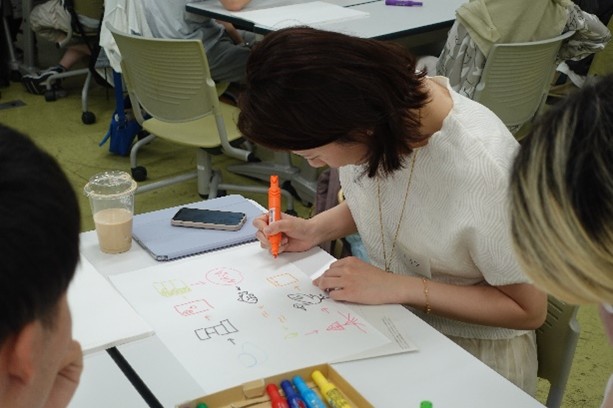
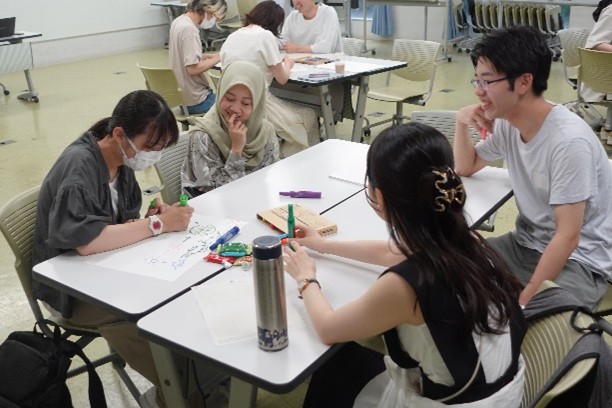
Activity 2: Discovering tips for structuring
■Overview: A workshop to extract key points of “structuring” from existing materials and apply them to visual graphics.
■Details: Each group received several sample graphic recordings created by the instructor, which skillfully incorporated visual graphic elements. Participants discussed what techniques or principles were used to structure the information effectively. Topics included the use of color combinations, consistent textures, grouping and categorization, the law of proximity, the use of invisible guiding lines, and ways to create contrast. After the discussion, one participant took on the role of facilitator and tried graphic recording in real time. By asking questions and organizing the groups’ ideas on the spot, the facilitator learned how to visually structure information shared by multiple groups. This hands-on activity helped all participants get a better sense of how to organize and present complex ideas clearly and visually.
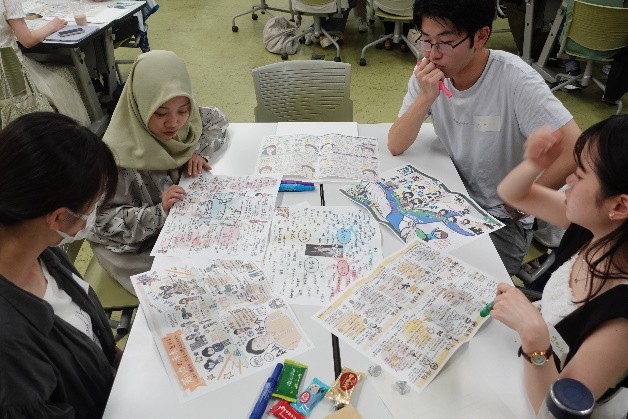
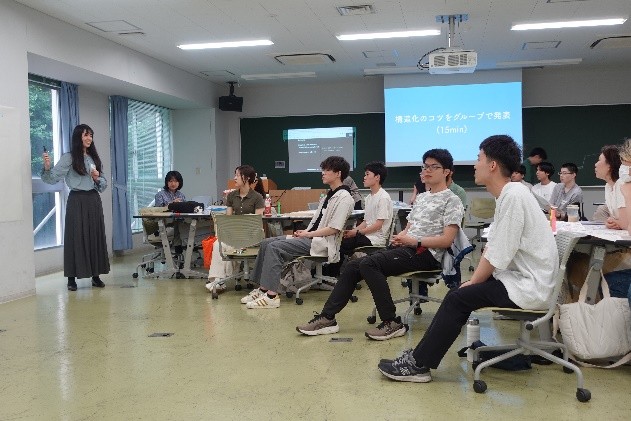
Activity 3: Designing frameworks
■Overview: A workshop to develop the ability to create your own frameworks for organizing and visualizing information.
■Details: Participants worked on four themes: “a person’s future,” “business planning,” “a company’s history,” and “a vision for the next 10 years.” For each theme, teams created their own structural frameworks from scratch. There were no right answers, so we first thought individually, then looked at other groups’ ideas to refine and build our own visual frameworks. Through this process, we learned how to take abstract thoughts and shape them into visible, organized forms. In the end, we realized the importance of flexibly adopting ideas that we found valuable, and we gained a deeper appreciation for the diversity and creativity possible in visual expression.
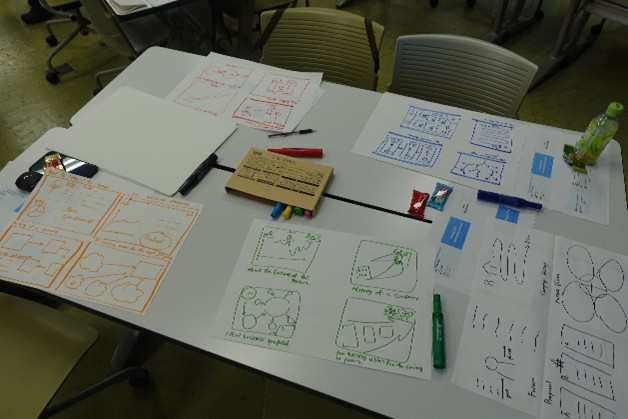
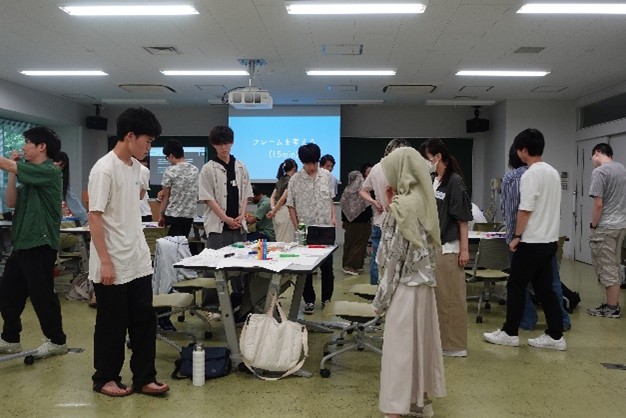
Activity 4: Structuring written information
■Overview: A workshop to practice organizing the elements of a text and expressing them visually.
■Details: We read a passage about a city of the future and extracted key points that left an impression on us. Then, we worked on organizing and structuring those elements visually. Through the process of selecting important information and thinking carefully about layout, we practiced transforming written information into graphic form. By focusing on making the visuals easy to understand, we not only deepened our comprehension of the passage but also experienced how visual summaries make it easier to share information with others.
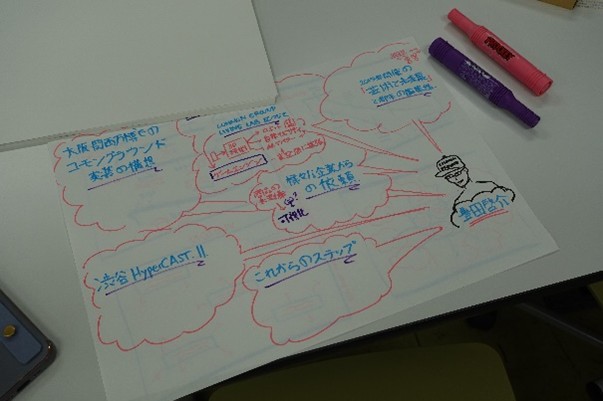
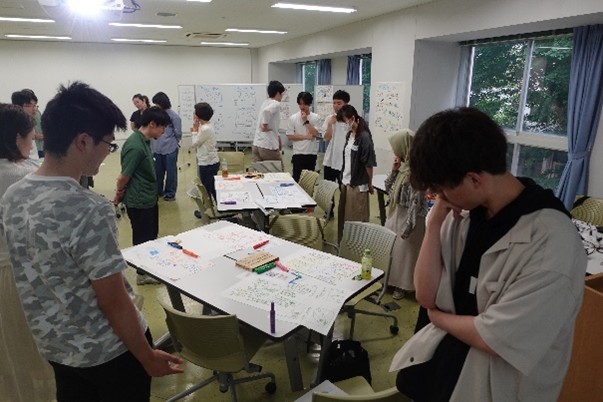
Activity 5: Discussing and structuring personal career paths
■Overview: A workshop where participants used dialogue to draw out personal stories and organized them visually using graphics.
■Details: In each group, one person talked about their career path, while the other two listened actively and asked questions using different approaches such as empathetic listening, inquiry, and exploratory dialogue. Based on the conversation, they organized the speaker’s story and visualized it as a structured graphic. Through this activity, we learned that drawing out someone’s thoughts and experiences requires more than just listening—it takes an open and engaged attitude. While creating the graphic, we also had to think carefully about how to express the importance and relationships between different pieces of information in a clear and meaningful way.
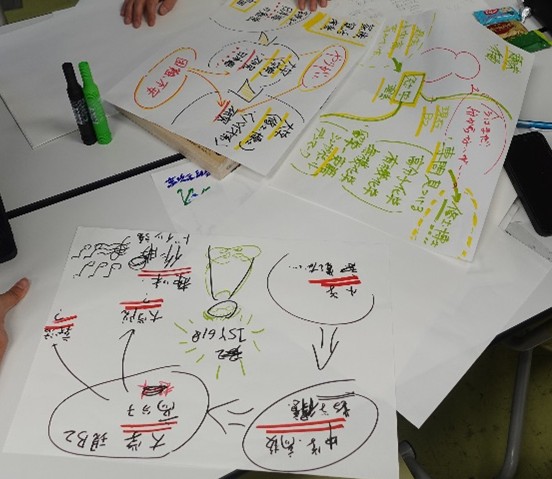
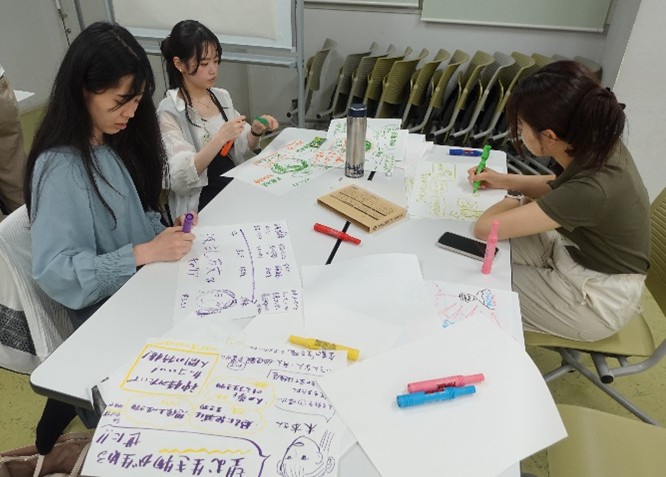
Activity 6: Planning and structuring a school festival booth
■Overview: In groups of six people, we brainstormed ideas for a school festival booth under specific conditions: a budget of 30,000 yen, no food or drinks allowed, activities must take place inside a classroom, and both participants and visitors should enjoy the experience. Each group chose one person to act as a facilitator, who was in charge of organizing the discussion and creating a visual structure of ideas. Through this activity, we experienced the fun of expanding ideas through discussion and saw how turning ideas into graphics helped deepen understanding and clarify the group’s direction.
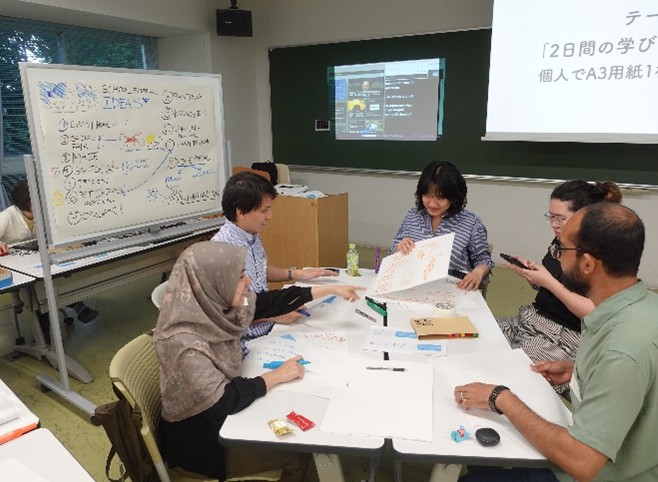
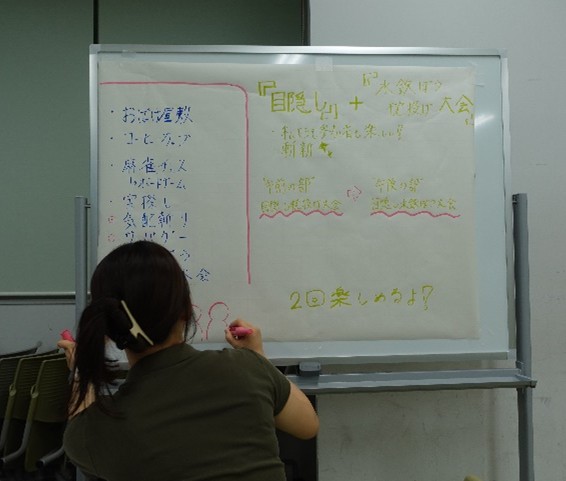
Reflections
Through this program, I realized that “dialogue,” “structuring,” and “visualization (graphic recording)” are closely interconnected, and that considering all three elements together makes communication much clearer and more effective. The ability to organize information and summarize it visually is not only useful for conveying ideas to others, but also for clarifying my own thoughts. In particular, the activity where we had to structure and visualize ideas in real time based on dialogue was quite challenging, but it taught me how important it is to genuinely try to understand the other person. The experience of thinking through open-ended questions, forming my own opinion, and expressing it in a clear and visual format felt like a highly practical skill—something I believe will be very useful in both my research and future career. I would like to participate in these kinds of skill-building workshops to further improve my ability to communicate and express ideas.
Additional Note
This time, I participated as an observer. I was impressed to see how focused and engaged all the participants were throughout the activities. If you’re interested in improving your graphic skills or enhancing your ability to express ideas clearly, I highly recommend joining this workshop. It offers a unique learning experience that you won’t usually find in regular classes. The facilitator explains everything step by step from the basics, so it’s a great opportunity even for complete beginners!
Written by:
Yuta Murao, D1, School of Life Science and Technology, ToTAL 6th Cohort


